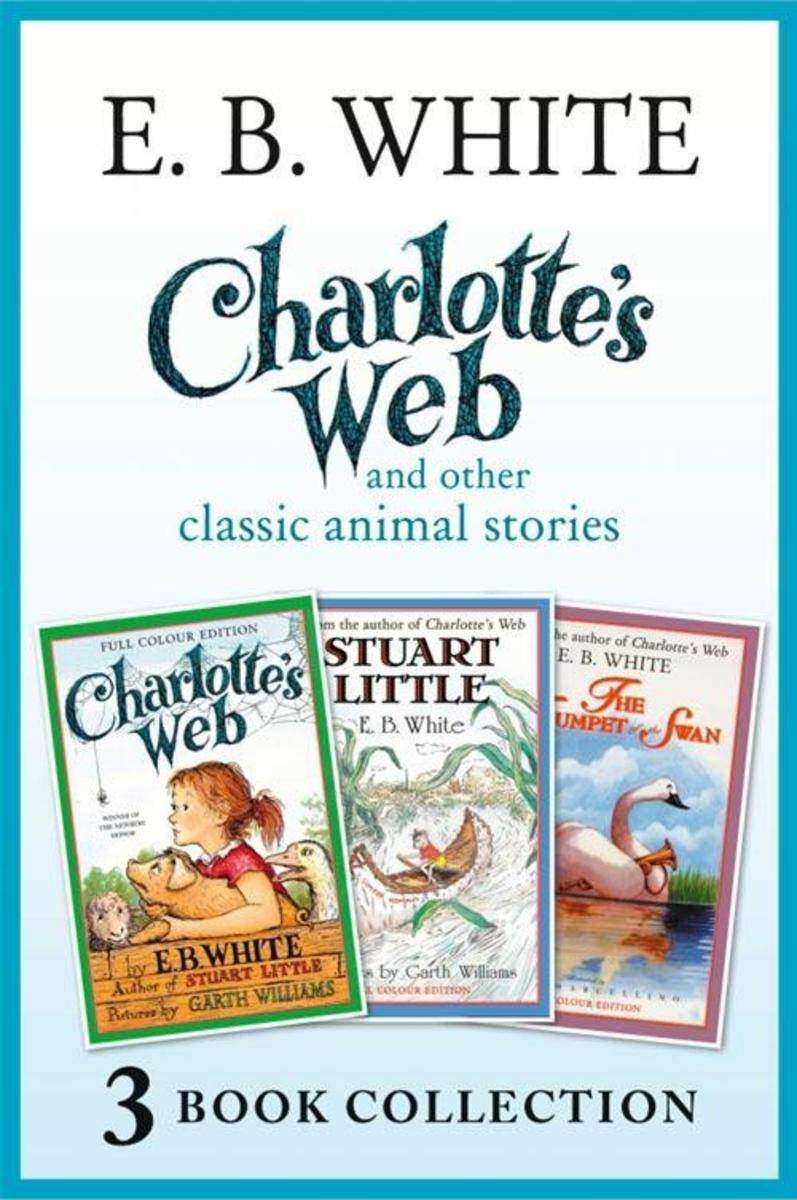
Soul Screamers Collection: My Soul to Lose…
¥347.96
Rachel Vincent’s spellbinding Soul Screamers series As a teen banshee, Kaylee’s blood-curdling screams are a death knell for others. Yet she never expected to see her own name at the top of a reaper’s list. The last thing Kaylee needs right now is to be skipping school, breaking her dad's ironclad curfew and putting her too-hot-to-be-real boyfriend's loyalty to the test. It’s time for Kaylee to kick some serious Netherworld butt…or die trying!


高口碑民国文大合集(共6册)
¥346.99
【民国+甜虐交织+民族史诗+自我救赎】高口碑民国文精选,共6册。分别为《明月何曾照清欢》《你是我远赴此间的绝色》《军阀家的九姨太》《少帅,你老婆太能吃了》《风雨煜城》《关河万里自当归》


贺麟中译黑格尔经典著作
¥346.00
《贺麟中译黑格尔经典著作》套装:小逻辑,黑格尔早期神学著作,精神现象学,哲学史讲演录《小逻辑》“贺麟全集”卷本书是《哲学全书纲要》的部分,通称《小逻辑》,以区别于《大逻辑》(即逻辑学)。全书除导言外,共分:存在论、本质论、概念论三篇,反映了黑格尔哲学体系的基本框架。黑格尔的《小逻辑》是构成他的《哲学全书》的一个主要环节,它的好处在于把握住全系统的轮廓和重点,材料分配均匀,文字简奥紧凑,而义蕴深厚。初看似颇难解,及细加咀嚼,愈觉意味无穷,启发人深思。他的学生在他逝世后编订全集时,再附加以学生笔记作为附释,于是使得这书又有了明白晓畅,亲切感人的特点。《黑格尔早期神学著作》“贺麟全集”第八卷《黑格尔早期神学著作》是著名哲学家、翻译家贺麟的重要译著之一,以八十岁高龄自诺尔编黑格尔著《早期神学著作》的德文原版翻译而成,并参考诺克斯与克朗纳的英译本。本书也是身为译介黑格尔至中国人的贺麟先生,生前后一部黑格尔相关译著。其中收入黑格尔著《民众宗教和基督教》《耶稣传》《基督教的权威性》《基督教的精神及其命运》及《1800年体系残篇》等五篇论文,是了解和研究黑格尔早期神学思想的手资料。《精神现象学》(上下)“贺麟全集”第15—16卷新校重排本,黑格尔哲学的“圣经”,深刻影响马克思、海德格尔、伽达默尔的哲学经典,对勘上卷初版与再版修订译文,存历史原貌利研究之便。《精神现象学》为德国古典哲学大师黑格尔阐述其哲学观点和方法论原则的部纲领性巨著。黑格尔自认此书为其哲学体系的导言。马克思誉《精神现象学》为“黑格尔哲学的真正起源和秘密”和“黑格尔哲学的圣经”。黑格尔通过此书提出,精神现象学是关于意识到达“*知识”或“科学”(即哲学)的道路的科学,它为个体提供了一把攀登*知识的“梯子”。中译本由贺麟、王玖兴合译,分上、下卷先后于1962年和1979年由商务印书馆出版。上卷1979年再版时曾修订译文,以与下卷译名统一,本次整理出版“贺麟全集”版,对勘再版所作修改,择其重要者,以编注形式留存上卷初版原貌。《哲学史讲演录》“贺麟全集”第11—14卷全新校对,重新排版,据贺麟手迹修订部分文字;德国古典哲学大师黑格尔天才的著作之一,哲学史的开山之作和经典; 贺麟弟子、著名哲学教授张祥龙参与修订编辑;重新收入苗力田选译黑格尔哲学史相关书信。《哲学史讲演录》是德国古典哲学大师黑格尔的代表作之一,“哲学史”的开山之作,治哲学者之书。黑格尔一方面将哲学史纳入他的客观唯心主义体系的框架中,把哲学史归结为理念回归自身的*精神阶段;另一方面把辩证法贯彻于哲学史研究,深刻地揭示了哲学史的发展规律。20世纪五六十年代,贺麟、王太庆等先生将其译成中文出版,是贺麟先生译述黑格尔的重要成果。本次收入“贺麟全集”出版,解决了之前版本由于出版时间相隔较远而存在的体例不一等问题,更符合当下阅读习惯。


葛荣晋学术论著自选集(全四卷)
¥345.87
由葛荣晋所著的《葛荣晋学术论著自选集(共4册)(精)》含四卷,**卷为中国管理哲学导论(修订版),第二卷为道学智慧与21世纪(附《老子》与商道),第三卷为儒学精蕴与现代文明,第四卷为先秦两汉哲学论稿。这四卷内容代表了葛荣晋学术研究的理论成果,可供相关读者阅读学习参考。

我的奋斗全六册
¥345.00
暂无信息


文白对照 净土五经一论要义通解(全四册)
¥345.00
中国佛教中的*大宗派净土宗的核心经典!全本无删减,无障碍阅读,原文精校、译文精准,依据古今高僧大德的论述解读经义!附完整译文、《净土法门五百问答》! 净土宗系中国佛教中的*大宗派,历史悠久,信徒众多。“五经一论”是净土宗的核心经典,也是中国传统文化中的宝贵遗产。自古以来,多有高僧大德予以积极推广和鼎力弘扬,关于这些经典的注疏可谓汗牛充栋,然而遗憾的是由于时代的久远,其文言已难以适应当代人阅读。直到今天,也鲜有综合前人注疏、完整解读“五经一论”且适合当代人阅读的书籍。《净土五经一论要义通解》填补了这个空白。 本书将通过疏理历*高僧大德的精辟注疏,阐述净土法门要义,揭示其简单中见其思想体系之博大精深。提纲挈领,以窥全豹,帮助我们深入领会净土法门之理念、主旨和精髓。


邹传安全集. 书法卷
¥344.00
《邹传安全集》是邹传安先生一生作品的集大成,是至今为止规模、品类全、权威的邹传安艺术全集,为当代中国工笔画艺术家个案研究提供了一个相对完整的文本。


云台山风光
¥344.00
在《云台山风光》摄影集第三版付梓之际,萦怀许久的一些话语挥之不去,不吐不快。 我首先想告诉大家的是,云台山作为联合国教科文组织认定的首批世界地质公园之一,其独特的地质地貌和美丽的山光水色,堪称峡谷*、山水经典,可谓韵味无穷、风情万种。十多年来,我利用节假日拍摄了万余幅表现云台山美丽风光的照片,从中挑选出100幅作品结成此集,这些作品和云台山自然风光的美轮美奂、雄浑大气相比,难及万一。


托尔金中洲三部曲
¥344.00
《精灵宝钻》是托尔金对中洲世界起源的设定,蕴含着他为英语民族塑造创世史诗的雄心,由小儿子克里斯托弗·托尔金在其身后整理出版。16幅全彩插画,译文全新修订,新增托尔金揭秘创作历程长文。 始有一如,“独一之神”,其名在世间称为伊露维塔。 精灵,一如的首生子女,永生永世热爱星光,他们的美丽并不凋谢或者消逝。 人类,次生子女,一如赐给了他们决定自己命运的自由,还有一样奇特的礼物——死亡。随着时间流逝,连众神亦会嫉羡。 精灵宝钻,由*有天赋的精灵——费艾诺造出。宝钻蕴藏着曾在双圣树上的维林诺之光,那是尚无任何堕落发生的太初时代的*后孑遗。一代黑暗魔君、堕落的魔苟斯盗走了它们。费艾诺众子发下亵渎神灵的誓言,执意离开家园,前去向大敌发动战争、复仇到底。他们蛊惑族人违背诸神,渡海出征。 同族相残,堕落由此开始…… 《霍比特人》在地底的洞府中住着一个霍比特人。比尔博,一个热爱安逸生活的霍比特人,自得其乐地待在袋底洞他的霍比特洞府里。清晨和煦,睿智巫师甘道夫的到来打破了宁静。“越过冰冷而又雾蒙蒙的大山,在那深深地下洞穴已有千年……”吟着古老的歌谣,十三个矮人将比尔博拽进冒险远行的队伍。在这趟“意外之旅”之中,与世无争的霍比特人比尔博,却孤身一人在暗如永夜的山底洞穴中发现了足以改变整个世界的小小戒指。 《霍比特人》自1937年首次出版,已被翻译成64种语言,销售超过1亿册,成为伟大的现代经典。17年后,续作《魔戒》出版。《霍比特人》完美地融合了史诗气派与童心稚趣。故事发生在精灵强盛的时代之后、人类统治的时代之前。那时著名的黑森林依然耸立,群山间仍充满艰险。如果此前你对这些浑然不知,那么随着这位平凡探险家的不凡旅程,你会和他一道顺便认识食人妖、半兽人、矮人和精灵,也会了解到那个遭到忽视的伟大时代。 初入世界的前路未知,正如去而复返后的无法忘怀。 《魔戒》这是一部为了世界的光明未来,誓死抵抗黑暗的伟大史诗。魔戒,拥有统御众戒、奴役世界的力量,黑暗魔君索隆苦觅已久。为了守护家园,魔戒继承人弗罗多毅然离开宁谧淳朴的夏尔,踏上前途未卜的旅途。与他同行的是睿智的巫师、勇敢的人类、美善的精灵、坚毅的矮人和热爱和平的霍比特人。征途见证了勇气与友谊。跃马客栈里的重重暗影,卡扎督姆桥的怒吼炎魔,勇猛骁勇的洛汗骠骑,范贡森林的上古树须,凄厉嘶嚎的邪恶戒灵,陡峭山壁旁的巨型毒蛛……每个人各自抵御着无尽的诱惑与磨难,承担起属于自己的善恶考验。 平凡的霍比特人战栗在末日烈焰面前,他能战胜这噬灭灵魂的魔戒吗? 全书共三部:《魔戒同盟》《双塔殊途》《王者归来》。 奥斯卡桂冠《指环王》三部曲电影原著小说。


“高手的经济学思维”系列套装(套装12册)
¥343.30
模型思维 斯科特?佩奇是风靡全球的“模型思维课”主讲人,有超过100万各行各业的人反复学习并从中受益。新书《模型思维》讲解了24种模型,从线性回归到随机漫步,从博弈论到合作,涵盖学习、工作、生活等方方面面——这些有趣的模型可以把任何人变成天才。 芒格说:“要想成为一个有智慧的人,你必须拥有多个模型。”这是一个数据爆炸的时代,数据充斥着我们的工作与生活,但仅拥有数据是远远不够的,必须学会让数据说话。模型就是让数据说话的秘诀,模型将帮助我们所有人从掌握信息提升到拥有智慧。 清单革命 现代世界的复杂性已经超出了人力所能控制的范围,任何一个需要从业人员掌控大量知识的领域都难逃厄运。从医疗到金融,从商业到行政,生活中的错误屡屡发生,令人触目惊心。 过去4年间,针对律师失误的诉讼案件数量增长了36%,有的律师搞错了开庭时间,有的把卷宗搞丢了,有的则用错了法律条款;要挽救一个患者的生命,需要数十位医护人员正确实施数千个治疗步骤,任何一个步骤的疏忽都可能致人于死地;建造一栋大楼需要联合16个领域的专家,不同的专家可能做出相互冲突的决定,一旦做出错误决策建筑早晚会倒塌。 无限的游戏 世界上有两种游戏,一种是有限游戏,一种是无限游戏。商业游戏就是一场无限的游戏。在这场无限的商业游戏中,没有所谓的时限,没有所谓的终点,更不存在所谓的赢。游戏的首要目标就是让游戏一直玩下去,只有这样,才能成为无线游戏中的头号玩家。 许多领导者总是将“赢”挂在嘴边,沉迷于“赢得竞争”,用有限思维来参与这场游戏。却不知道,在商业无限的游戏中,我们必须停止思考赢,转而思考如何建立一个足够强大、足够健康的组织,让它能够经久不衰,不被游戏淘汰。只有用无限思维来玩商业这场无限游戏,我们才能朝着永远存续的目标前进。 牛奶可乐经济学4 没有艰涩的数学公式,只有有趣的生活事例,一本适合所有人阅读的经济学入门书,为普通读者打开更多扇窗,为专业人士提供更多视角。 “国家图书馆文津图书奖”获奖作品《牛奶可乐经济学4》升级版,更逗趣、更有料、更充实、更深入,带你走入新奇有趣的经济学课堂! 巴菲特*推崇的8大企业家特质 全全新视角深化对商业的理解,全新方法改善企业的经营成效。桑代克对8位伟大企业家的研究提供了非常有价值的借鉴模版,是每一位中国管理者都应该阅读的经典之作。商业局外人鲜明的烙印,深受巴菲特本人重视,成为他投资决策的重要标准。通过辨识企业管理者特质,挖掘投资良机,已经成为投资界公认的有效手法。如何寻找中国自己的商界局外人,这本书无疑能为投资者提供很有价值的指导。 无价新版 为什么百老汇剧场里价格越高的位置卖得越火?为什么100万美元带来的愉悦感,400万美元才能让它翻倍?为什么有人说得出张国荣的老唱片该比蔡依林的贵2倍,却说不出它到底该卖10块还是1毛?为什么议价时,一定要抢先报价,而且一定要“狮子大开口”? 在本书中,畅销书作家威廉·庞德斯通揭示了价值的隐性心理学。在心理学实验里,人们无法准确地估计“公平价格”,反而受到无意识、不理性、政治等不正确因素的强烈影响。营销专家们很快就把这些发现应用了起来。“价格顾问”建议零售商怎样说服顾客多付钱或少付钱,谈判教练也提供类似的建议帮商务人士达成谈判。全新的价格心理学要求商家设计价签、菜谱、返款优惠等。 稀缺新版 哈佛大学终身教授、“麦克阿瑟天才奖”获得者塞得希尔·穆来纳森和普林斯顿大学心理学教授埃尔德·沙菲尔强强联合之作,继诺贝尔经济学奖获得者丹尼尔·卡尼曼《思考,快与慢》之后的又一部行为经济学重磅著作,《金融时报》2013年十佳商业图书。 著名营销及销售行为专家孙路弘特别编制《稀缺》测试题,引导读者踏上解决稀缺之路。 首度提出“带宽=认知能力+执行控制力”概念等式。两位作者应用了大量实验室研究和现实调查,他们发现:从商场、火车站,到印度金奈的蔬菜市场,从公司白领、机构成员到拾荒者,所有处在稀缺状态中的人们,其大脑都会被稀缺心态俘获,过于专注于“管窥之见”,变得更加笨和冲动,亦即其认知能力与执行控制力会变得低下。 影响力(全新升级版) 风靡全球,从未被超越的营销sheng经。全球畅销35载,畅销5000000册,社会心理学领域的“现代汉语词典”。在书中,作者从专业角度为读者阐释了顺从他人行为背后的7大基本原则:互惠、承诺与一致、社会认同、喜好、权威、稀缺和联盟。为读者解释了为什么有些人具有说服力,而我们总是容易上当受骗。本书对于商业人士以及广大普通读者有深远的意义,教你学会对说服专业人士说“不”,帮助你成为一个对他人有影响力的人。 噪声 《噪声》是诺贝尔经济学奖得主、“行为经济学之父”丹尼尔·卡尼曼携手决策领域专家奥利维耶·西博尼和卡斯·桑斯坦共同推出的重磅新作,也是卡尼曼继畅销书《思考,快与慢》之后酝酿10年思考的全球瞩目里程碑式巨作,行为科学领域又一重大发现。几十年来,大家都认为,偏差是导致人类判断出错的关键。但是今天,卡尼曼系统性地指出:噪声,才是影响人类判断的黑洞。 精要主义 “21世纪的史蒂芬.柯维”麦吉沃恩诚意之作。在这个过度互联、选择呈指数级增长的时代,*能人士已难以应对,当下极为重要的,是成为一名精要主义者。 著名主持人张绍刚、金立手机副总裁俞雷、猎聘网创始人戴科彬、《非你莫属》制片人刘爽、股神沃伦.巴菲特、硅谷创投教父彼得.蒂尔、Twitter创始人杰克.多西等为精要代言。 系统之美 《系统之美》作者德内拉·梅多斯,是世界上伟大的系统思考大师之一,师从系统动力学创始人杰伊?福瑞斯特,是知名的“世界模型Ⅲ”主创人员,也是“学习型组织之父”、《第五项修炼》作者彼得?圣吉的老师。 系统思考泰斗10年手稿首度出版,帮助大家提高理解和分析身边系统的能力,更积极地投身于各种变化,用新的方式去管理、决策,并在这个充满各种复杂系统的世界里更好地生活。

Charlotte’s Web,The Trumpet of the Swan, Stuart Little
¥342.27
Three beautiful, timeless stories by beloved author E.B.White - available together in ebook for the first time! CHARLOTTE’S WEB ‘Some Pig’. ‘Humble’. ‘Radiant’. These are the words in Charlotte's Web, high up in Zuckerman's barn. Charlotte's spiderweb tells of her feelings for a little pig named Wilbur, who simply wants a friend. They also express the love of a girl named Fern, who saved Wilbur's life when he was born the runt of his litter. STUART LITTLE Stuart Little is no ordinary mouse. Born to a family of humans, he lives in New York City with his parents, his older brother George, and Snowbell the cat. Though he's shy and thoughtful, he's also a true lover of adventure. Stuart's greatest adventure comes when his best friend, a beautiful little bird named Margalo, disappears from her nest. Determined to track her down, Stuart ventures away from home for the very first time in his life. He finds adventure aplenty. But will he find his friend? THE TRUMPET OF THE SWAN Like the rest of his family, Louis is a trumpeter swan. But unlike his four brothers and sisters, Louis can't trumpet joyfully. In fact, he can't even make a sound. And since he can't trumpet his love, the beautiful swan Serena pays absolutely no attention to him. Louis tries everything he can think of to win Serena's affection;he even goes to school to learn to read and write. But nothing seems to work. Then his father steals him a real brass trumpet. Is a musical instrument the key to winning Louis his love?


晚清民国风云人物列传(全12册)
¥341.99
汲取人生智慧,收获成长心法,探寻人物背后的风云传奇,勘透立身处世的捭阖之术 破解困局,精进人生 晚清民国风云人物集体现身说法 为你分析面对困惑时的解法 学习古为今用的处事真谛


拒绝“恋爱脑”:现言作家尤知遇都市“清醒文”(共6册)
¥341.99
尤知遇现言精选,共6册。分别为《乔医生隐婚了》《那一年,花开得不是*好》《当离婚律师想离婚》《迟来的周先生》《顾盼萧萧》《岑助理是福星》


哈佛、斯坦福经典课程系列(套装共14册)
¥340.60
套装书包括: 《说服力:当事实不再重要,如何说服他人改变主意》 《哈佛24小时》 《哈佛短篇小说写作指南》 《另类:斯坦福大学受欢迎的经济学课》 《你要如何衡量你的人生》 《让生活更快乐的哈佛实用心理学》 《生活中的金融学:哈佛金融通识课》 《斯坦福睡眠法》 《团队赋能》 《我在哈佛的后一堂课》 《无知》 《自控力(2021年新作):斯坦福大学掌控自我的心理学课程》 《自控力:斯坦福大学广受欢迎的心理学课程(2020新版平装)》 《自控力:斯坦福大学掌控情绪的心理学课程》


二十五史简明读本(平)(全15册)
¥340.00
《二十五史简明读本》是我社1997年发、出版的、颇受读者欢迎的《二十五史新编》的升级版。自司马迁撰著《史记》以降,历朝历代修史不绝,一套《二十四史》激起无数人探究历史的欲望和热情。然在社会节奏不断加快的今天,卷帙浩繁的《二十四史》令许多人望而生畏。而我社这套《二十五史简明读本》篇幅适宜,短小精悍,通俗易懂。它既保持了《二十四史》的精华,又汲取了现代史学研究成果尤其是考古发现的成果,并增加了中国近代的历史——《晚清史》。特别是在这次升级的修订中,不但在内容上增添了史学研究和考古发现的*新成果,还增添了精美的彩图,同时在版面和装帧上也作了符合当今人们审美理念的新的设计,从而使内容与形式完美融合,相得益彰。


心之骛—王新妹作品
¥340.00
摄影,是时间的艺术,亦是空间的艺术。 或者,更确切地说,是以空间来注解与转换时间的艺术。 对于摄影师——照片的制造者而言,时间犹如指间流沙;镜头定格的每一个瞬间,都是消逝不再之物。如果说摄影师拥有某种决定权,即决定在何时按下快门、以永恒留存时间的权力,那么,这种权力行使的基础,往往是取景框中的空间呈现了某种特别的关系或是意象——在这个意义上说,摄影不是时间的艺术,也不是空间的艺术,而是以空间来注解与转换时间的艺术。


中国近代图像新闻史:1840~1919
¥340.00
本书运用了大量的历史资料,对近代中国的“图像新闻”的历史,即以图像来描摹社会“时事”的历史展了叙述,并对中国近代“新闻图像”文化做出了高度评价。认为近代“新闻图像”与其他文化样态(楚辞、汉赋、唐诗、宋词、元曲、明清小说)一起构成了中华民族宝贵的“文化遗产”清单。而认为深而系统地展“民国图像”文化研究,使它像其他文化形态一样焕发出历史文化的光辉,是我们这个时代应该担负起的文化历史责任。 全书总共六卷,洋洋285余万字,书中选用有2400多张珍贵的图片资料,全面而细致地对1840-1919年间的中国近代“新闻图像”的历史行了梳理,并且运用SPSS软件对资料行了综合分析。本书图文结合、条理清晰、资料翔实、建构完整,具有相当的学术价值、文化价值与历史研究价值。


墨影画韵
¥340.00
初观陈大志先生的摄影作品,便感动于作品中光影水墨的诗意建构和融入生命精神的个性气息。 从《树·影》到《山野画卷》,从《三清仙境》到《关山依旧》,他怀着对自然的膜拜、对光影探索的痴迷和对中国水墨艺术的敬意,带给我们全新的视觉描绘和独特的水墨印象表达。

The Partisan
¥339.13
The writings of William Gilmore Simms (1806-1870) provide a sweeping fictional portrait of the colonial and antebellum South in all of its regional diversity. Simms's account of the region is more comprehensive than that of any other author of his time; he treats the major intellectual and social issues of the South and depicts the bonds and tensions among all of its inhabitants. By the mid-1840s Simms's novels were so well known that Edgar Allan Poe could call him "e;the best novelist which this country has, on the whole, produced."e; The thirteenth volume in the ongoing Arkansas Edition of the works of Simms, The Partisan is the first in order of publication of Simms's Revolutionary War romances. Although Simms took advantage of the novelist's prerogative to invent characters and events for his saga, he did so with a historian's eye, making extensive use of official histories; letters, diaries, and other documents; family traditions; and unpublished and published memoirs. Simms gives human interest to the novel's historical framework with two love triangles, mixing romantic conventions with gritty realism that outlines the four classes of Simms's ideal society. The Partisan is also remarkable among Simms's work for its use of symbols, indicating, perhaps, a new intention for the novel. The result is a satisfying work of literary art enlivened with adventure and humor while remaining true to the history behind it.


疫情下的个人自救指南(套装共12册)(甄选12本书籍,从面对危机的情绪管理、处世哲学、职场选择、心理学,到健康、旅行游记、理财等方面,为你提供一系列的建议与指引。愿你以积极的心态面对人生的每一天!)
¥339.00
这本书诞生在咨询室的沙发上,形成于作者和11位来访者之间的亲密对话。书中讲述的这些真实故事,都是关于被埋藏起来的创伤,其中有来访者的自述,也有咨询师个人的经历。 在咨询室里,作者以咨询师的身份探索那些意识之外被忽略的记忆。我们自己的童年、父母的痛苦、祖父母的创伤,那些被拒绝谈论的经历,那些在大脑中被归类为“没什么大不了”的不重要事件,总是会以某种方式返回我们的生活,困扰我们。在这些故事中,作者以精神分析师的视角,描述了遗传创伤的多张面孔。 一位拥有美满家庭的女性痛苦于自己的婚外恋,她的出轨与自己“情感死寂”的母亲、当年垂死的外祖母有着怎样的联系?一位沉浸在失恋痛苦中两年之久的男子,他的梦境将如何牵扯出祖父自杀的真相,以及自身痛苦的根源?外祖母指控哥哥性侵了妹妹,警方多次介却没有找到证据,事情的真相是怎样的,性侵的幽灵可以影响一个家庭中的三代女性吗?为什么一位经历过童年暴力的男子,在咨询的始展现出了强烈的攻性,而另一位因为父母意外怀孕而出生的男子,为何在自己初为人父之后怀有自杀的倾向? 把来访者带咨询室的,可能是一些再寻常不过的触发事件︰无法摆脱失恋的悲伤、犹豫是否要生养下一代、过于情绪化、感觉不幸福、神经衰弱、自杀的念头、夜间的惊恐等等。但随着对话的展,探索的深,真相被逐渐剥。 这本书关注祖父母的创伤怎样存在于孙辈的心里,讲述被父母埋藏的秘密,也寻找我们对自己保留的记忆,那些威胁性太大、我们无法完全处理的现实。这11个故事试图厘清过去、现在和未来之间的联系,并尝试回答我们应该如何继续。 它们或许是感伤的,但结局都充满希望。


成功打造初创企业(套装共12册)
¥339.00
本套书包含《创业时,不可不知的细节》《资本游戏》《天使投资指南》《企业财税通》《如何打造一流创业团队》《大数据与人力资源》《华为灰度管理法》《反常识管理》《成交:如何*转化潜在客户》《把增长做到*》《干就对了》《超级吸金术》共12册。 创业九死一生,如何才能大大提高生存概率?创业之路复杂艰辛,如何避坑尽一切可能减小风险?本套书贯穿了有关创业初期融资、股权、资金管理、人员管理、风险控制等多方面知识,并且凝聚大量真实创业经验,提供贴近实战的关键指导;剖析陷阱误区,解决创业难题。让创业少走弯路!




 购物车
购物车 个人中心
个人中心



